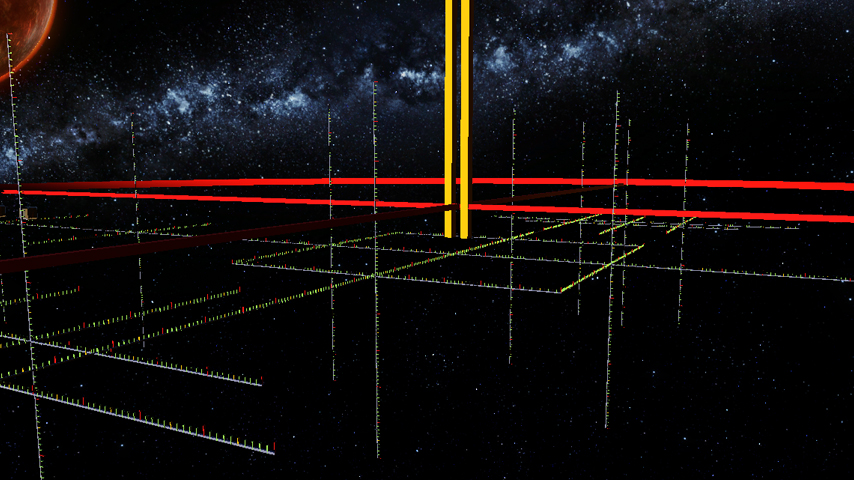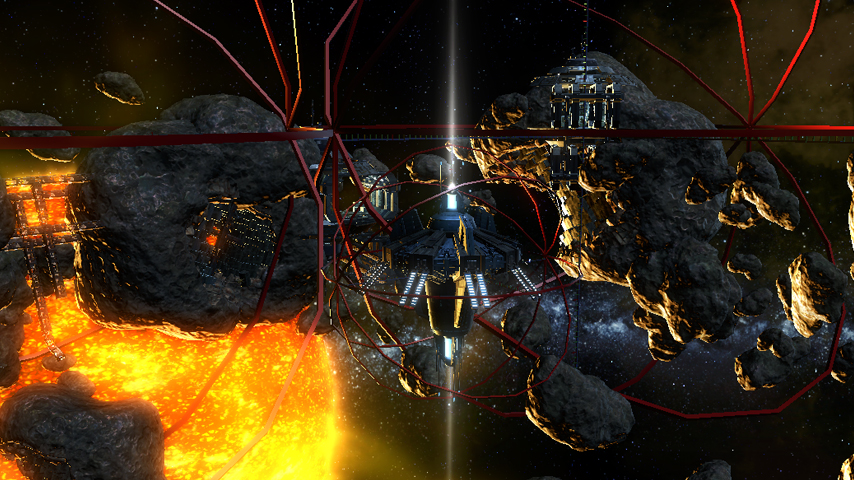Developer Blogs
Developing a Level for Galactic Starfighter
Howdy Starfighters! I’m Chris Schmidt, one of the designers on the Galactic Starfighter team, and I’m here to talk about Galactic Starfighter level design. I thought it would be fun to peel back the curtain a bit and give you, the fans, an insight into what it takes to create a level from start to finish.
The first step naturally is brainstorming. Design and art collaborate to come up with the type of environment we want to create. We typically lean heavily on iconic scenes and locations from the Star Wars™ movies for inspiration. For our first environment, the Lost Shipyards, we wanted to capture the feeling of weaving through asteroids and blasting through a half-built Star Destroyer.
Next, we need a base design for the map layout. The critical aspect to get right at this stage is scale. Galactic Starfighter ships are actually smaller than Star Wars™: The Old Republic™ player characters. This allowed us to build larger relative environments so we could maximize our flying space. Once we had a rough idea of the level size, I created a 2D map of the play space in order to visualize where points of interest (POI’s) would be placed relative to player spawn-in points. At this stage, everything is measured to ensure no team has an inherent advantage in the map.
We’re finally ready to put something in the game! I replicate my map design in the game using blockout tools that players will never see. These are essentially guides for the artists and myself to guide POI and gameplay element placement.

Our amazing artists dive in next, building out the environment including the POI’s. In the Lost Shipyards level, we feature an abandoned Shipyard and Asteroid Mining Facility. We let the environment tell a story in every level. In the Lost Shipyards, raw materials are mined from asteroids, processed and refined in the Mining Facility, then used in the Shipyard to construct Star Destroyers. Players will see half-constructed ships they can fly inside of, along with large asteroids being actively mined.
We start polishing our environments by adding visual effects and sound design to the level in order to make the experience as immersive as possible. It’s also at this point that we measure once again to ensure the environment is not creating a disadvantage for any particular team or ship role. In the Lost Shipyards, for example, I measured the maximum range of a fully upgraded Gunship’s railgun in order to ensure there were plenty of spots on the map with good line of sight and cover opportunities.

Our last bit of iteration comes from lots and lots of playtesting. Sometimes we need to shift some asteroids around, or remove some giant girders in order to make an area feel just right. These can only be identified by playing the level and getting a general feel from the team on how the level plays. Once we feel like the level is awesome enough, we build the maps we need and release it into the wild!
The true test is how our players feel the levels look and play, and we always look forward to public testing so we can share our excitement and enthusiasm with other Starfighters!
See you in space!
Chris Schmidt
Designer



